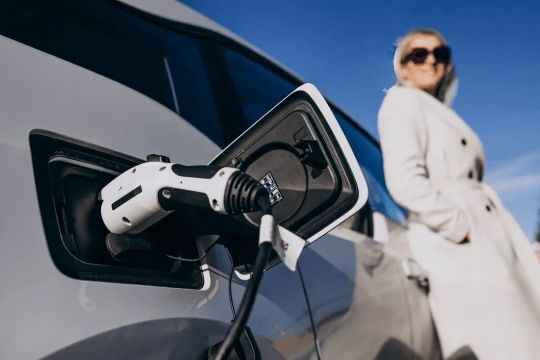


Installing EV Chargers at Gas Stations: Is It Feasible?
As electric vehicles (EVs) become more popular, traditional gas stations are considering how to adapt to this new demand for EV charging. The question is: Can gas stations evolve by installing EV chargers? The answer is yes, but it’s not a simple switch.
High Upfront Costs
Installing EV chargers can be expensive. A DC fast charger can cost between $50,000 and $200,000, depending on location and electrical infrastructure. Many stations may also need to upgrade their electrical systems to support the high power demands of fast chargers. On top of this, there are costs for installation, labor, permits, and maintenance.
Space and Infrastructure Limitations
Not all gas stations are ready for EV chargers. Urban locations may have limited space, and older stations may have outdated electrical systems. Some stations may require months of upgrades to support even one fast charger. Additionally, adding chargers means losing valuable fueling space, reducing the station’s capacity to serve traditional customers.
Uncertain Revenue
Unlike the predictable profits from gasoline, EV charging presents a new and uncertain revenue model. Many EV drivers expect charging to be free or low-cost, which could limit profits for gas stations. Stations must reconsider how to generate income, whether through charging fees, food sales, or partnerships with charging networks.
Meeting Growing Demand
The global shift toward EVs is accelerating, with projections that EVs will account for 40% to 60% of new car sales by 2030. As more consumers drive electric cars, the need for accessible and reliable charging infrastructure will grow. Gas stations, already situated in high-traffic locations, are well-positioned to meet this demand.
Diversifying Revenue
Stations that invest in EV chargers early on may gain a competitive edge. By attracting environmentally-conscious consumers, they could increase foot traffic and partner with established charging networks like Tesla or ChargePoint, accessing their existing customer base.
Government Incentives
Governments are offering grants, tax credits, and other incentives to help reduce the cost of installing EV chargers. In some areas, utilities may subsidize electrical upgrades, which can significantly lower the financial burden for gas stations.
Gas stations are not the only places expanding charging infrastructure. Locations such as apartment buildings, office complexes, retail centers, and even resorts are installing EV chargers. These places offer “dwell time,” allowing drivers to charge while spending time at the location, making them ideal for Level 2 chargers, which take longer to charge compared to DC fast chargers.
To speed up EV adoption, the following actions are needed:
Gas stations can certainly evolve to support EVs, but the transition requires careful planning, investment, and adaptation. As EV adoption grows, gas stations may become more than just fueling stations—they could become hubs offering charging services alongside food, beverages, and other amenities. This shift will help create a more sustainable and connected transportation future.Know more about Google SEO Directory
